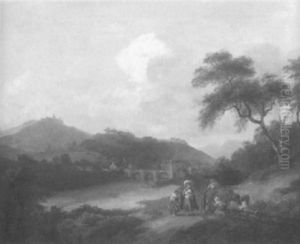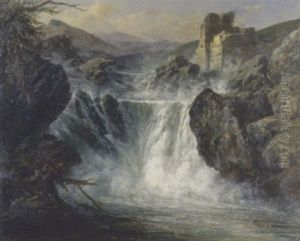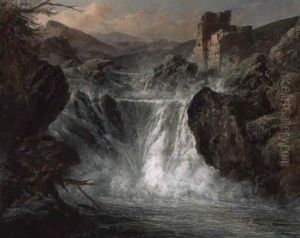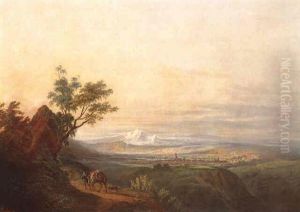Leon Soulie Paintings
Leon Soulie, born in 1848 and passing in 1905, was a French painter whose work, though not widely known in the contemporary art scene, holds a special place in the annals of 19th-century French art. His career spanned a period of significant transformation in the art world, bridging the late Romantic period and the burgeoning Impressionist movement that would come to define the era. Soulie's work is characterized by its delicate sensibility, attention to detail, and a profound appreciation for the natural world, qualities that align him with the pre-Impressionist school of thought.
Soulie's early life was marked by a deep immersion in the arts. Born into a family that appreciated the cultural vibrancy of France, he was encouraged from a young age to explore his artistic talents. He received his formal education in art at the École des Beaux-Arts in Paris, where he studied under masters of the time. This education not only honed his technical skills but also introduced him to a network of artists and patrons that would support his career in the years to come.
Throughout his career, Soulie experimented with various subjects, including landscapes, portraits, and still lifes. His landscapes, in particular, reveal an artist deeply attuned to the nuances of light and atmosphere, traits that hint at the coming Impressionist revolution. However, Soulie remained distinctly apart from any one movement, preferring instead to chart his own course. This independence is perhaps one reason why his name is not as readily recognized as some of his contemporaries.
Despite his considerable talent, Soulie's work did not achieve the same level of commercial success as some of his peers. However, he was respected by his colleagues and maintained a modest level of recognition through exhibitions at the Salon in Paris, a prestigious venue for artists of the time. His works were appreciated for their beauty and emotional depth, capturing moments of everyday life with a sensitivity that endeared them to a discerning clientele.
After his death in 1905, Soulie's work fell into relative obscurity, overshadowed by the bold innovations of the Impressionists and the tumultuous shifts in the art world that followed. Today, however, there is a growing appreciation for artists like Soulie, who represent the nuanced transitions between major artistic movements. His paintings are now recognized not only for their intrinsic beauty but also for their historical value in tracing the evolution of French art in the late 19th century. Collectors and museums are increasingly seeking out his work, ensuring that Leon Soulie's legacy continues to inspire and enchant art lovers around the world.

